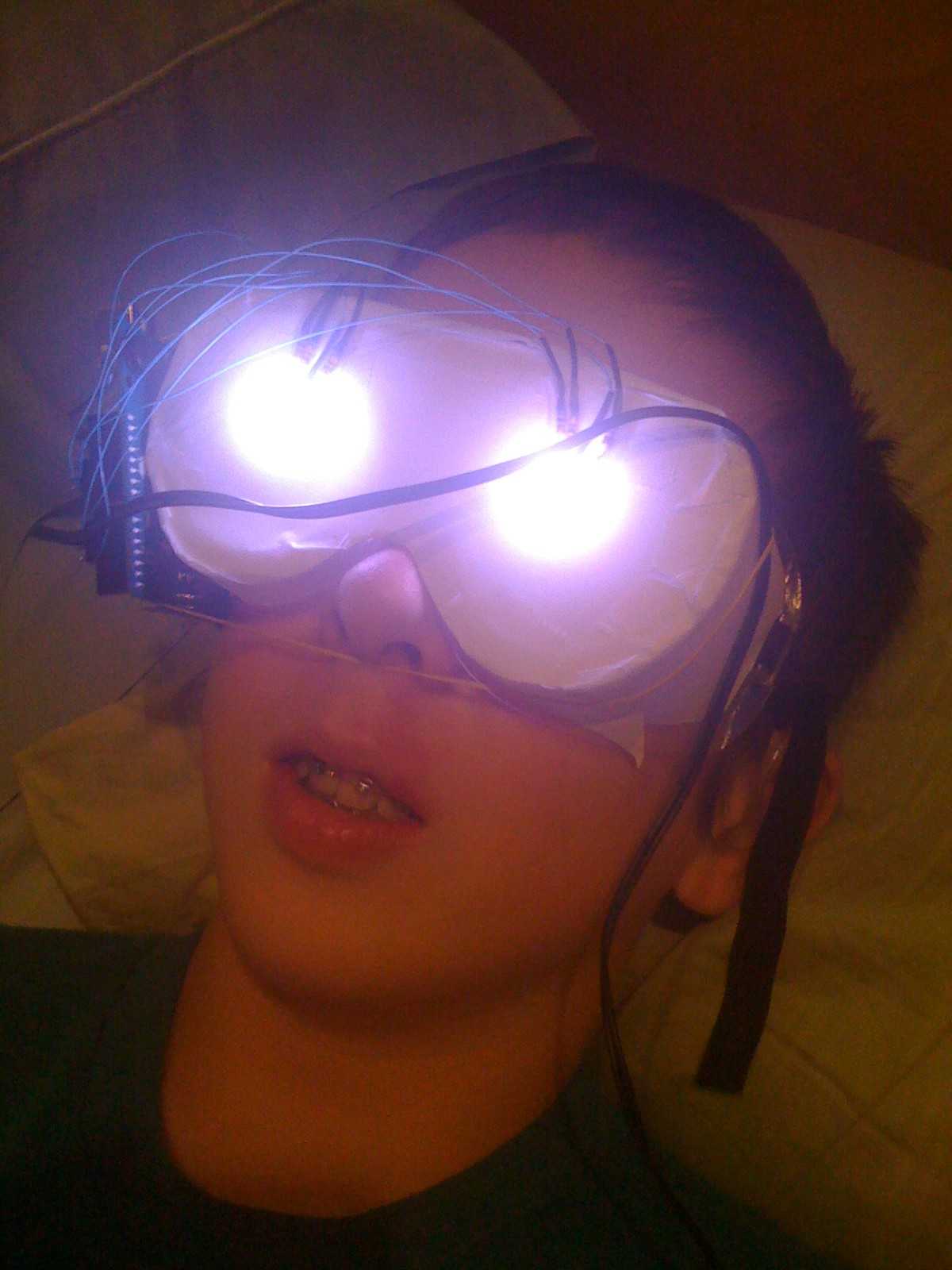ColorGoggles! ("Ardwoggles?")
24 January 2011
It’s my senior year and I have more school work than ever before, and it seems my number of extracurricular projects has gone up as well. At least I can’t say I’m bored!
In my most recent Arduino hack-together, I decided I would try to bang out some light-therapy goggles to liven up the gray Winter evenings. I love the emotional possibilities of light-based projects, and the goggles provide a very personal connection to the two RGB LEDs they house. In this post I’ll do a brief writeup of my hour-long prototyping escapade.
The Super-Simple Setup
Ardwoggles (my mom came up with that one, and it stuck) are a very simple device thanks to the all-purpose power of the Arduino board. The starting point was a pair of safety goggles, which I wrapped in white printer paper. As shown in the picture, the main attraction is a pair of LEDs, specifically common-cathode RGBs. To get that just-right diffusion on the inside, I sanded off the top of each LED until it was flat, and laid three layer of white paper between the lights and the goggle glass.
Power comes from a wall-wart at the moment, though as soon as I find a battery pack I’ll strap it on. The wall tether provides an excuse for settling down, breathing deeply, and enjoying the colorful journey.
The Therapeutic Code
Ardwoggles run on a special breed of the code from my StaRGB project, which has no project page yet. The premise is simple: gently fade between soothing, hypnotic colors using PWM on the six Arduino-to-LED outputs.
The Psychedelic Aftermath
The fun part of the Ardwoggles is the enveloping, immersive world of color they bring right to your eyes. It’s arguably just as fun to watch others wear the goggles, both for their expressions and the cyborg-like costume the goggles create. The goggles are cheap and easy to build, and provide some good, clean relaxation in the downtime of the day.
